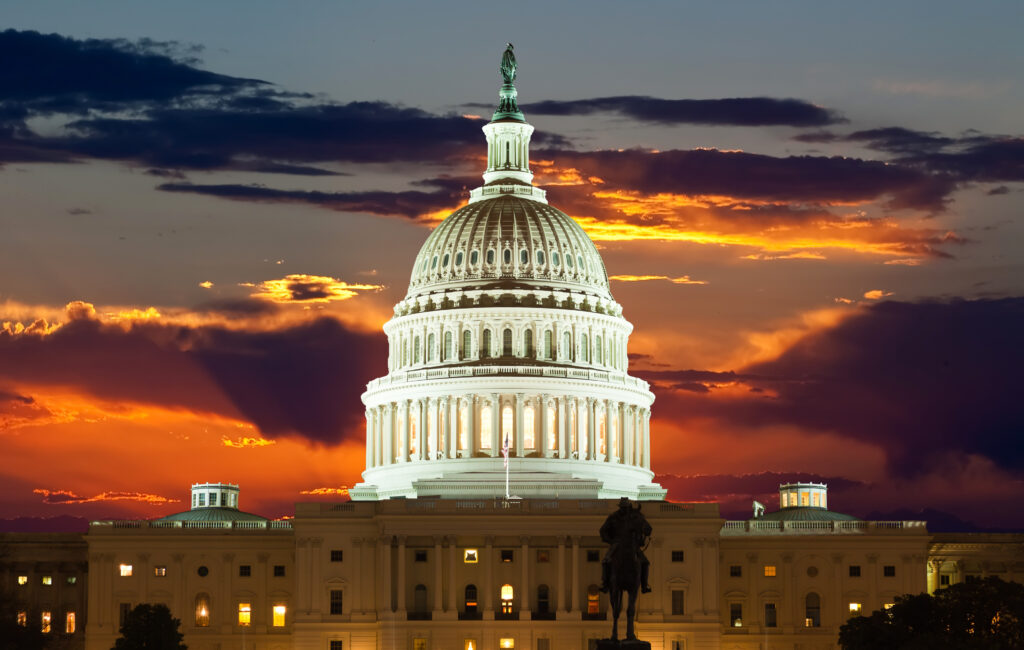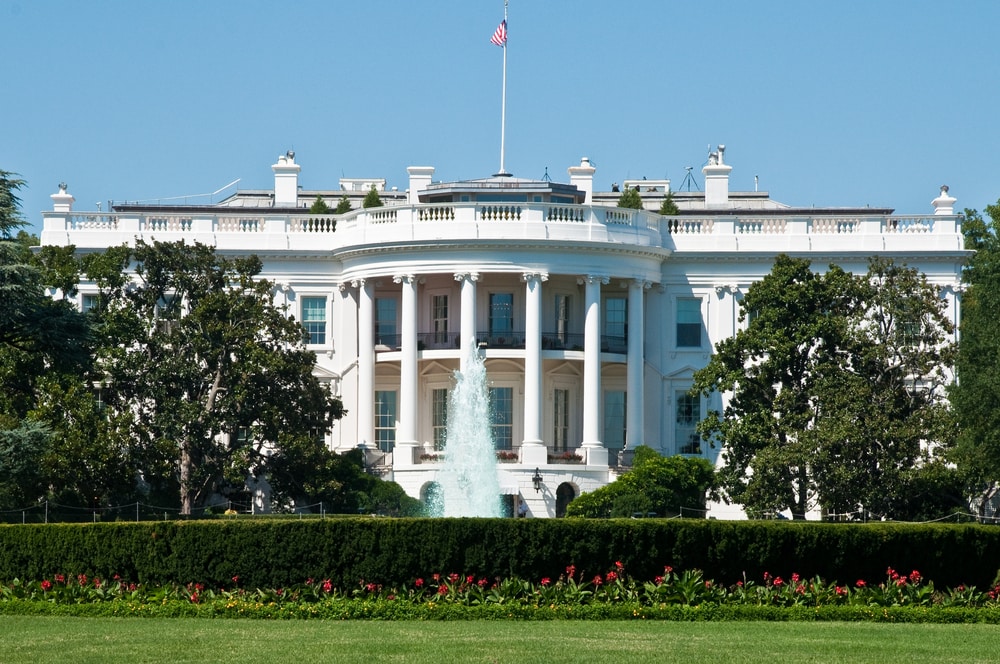FERC’s Unbearable Ultimatum to States: The Minimum Offer Price Rule
The Federal Energy Regulatory Commission (FERC) wrapped up 2019 with a bang, to say the least. It aggressively expanded a price floor for the country’s largest electric capacity market, operated by the PJM Interconnection, which has a 13-state footprint spanning the Mid-Atlantic to Chicago. The FERC’s December decision, known as the minimum offer price rule (MOPR), installs price controls for generation resources that receive state subsidies in PJM. Soon, the direct precedent will likely spread to other electric capacity markets in the Northeast, while the indirect precedent may reorient national policy for other wholesale electricity products everywhere except Texas.
This debacle has been a long time coming. States have subsidized across all fuel types for decades, but in recent years, some states disregarded cost considerations altogether to splurge on subsidies for new renewables and existing nuclear and coal plants. In fact, the three most affected state subsidies are massive backroom deals for old power plants:
- A $300 million annual subsidy to nuclear plants in New Jersey that were adopted despite objections from the state oversight agency in charge of utilities (one New Jersey utility commissioner called the subsidy “a disgrace”). The state’s consumer protection office has gone to court to overturn it.
- A $200 million suite of annual subsidies to nuclear plants in Illinois. Legislators have filed a bill to repeal the bailout in light of a corruption probe into the subsidy recipient, Exelon Corporation.
- A roughly $200 million annual subsidy for Ohio nuclear and coal plants that primarily benefits the FirstEnergy Corporation, which doled out $1 million in campaign contributions leading up to the subsidy approval. The state bailout comes after FirstEnergy failed to secure a federal bailout, which the FERC unanimously rejected.
Such subsidies came to the detriment of consumers and owners of competitive “merchant” generators alike. They joined forces to challenge the legality of nuclear zero emission credits (ZECs) programs, which carry a particularly severe economic penalty. They lost, and merchant gas generators adopted the MOPR as their ZEC redemption, only to find a swift rebuke from industrial consumers that, when it comes to subsidies and price controls, two wrongs don’t make a right.
Quite clearly, the MOPR is better framed as “certain suppliers vs. all consumers” than the predominant press framing of “fossil vs. clean energy.” In fact, the vast majority of immediate MOPR costs will be absorbed by nuclear and coal facilities, considering that renewables subsidies for existing generation were grandfathered in the ruling. However, the impact on renewables will grow sharply given that the queue of new projects coming online is dominated by renewables. Suffice to say that each fuel camp has a big dog in this race, but the material policy decision boils down to fuel-neutral instrument choice; that is, whether price controls are proper tools to counteract subsidies. Economic history and empirical evidence say they are not.
Although the mechanics are complex, the FERC’s basic premise is that a federal price control will “fix” the price-suppression effects of state subsidies. If only it were that simple.
Historically, central authorities lack sufficient information to accurately mimic market participants. As summarized by the Cato Institute, a core problem with price controls is that “no entity is well informed enough to be able to exactly identify the imperfection, choose the correct price to rectify the situation, and then provide ongoing adjustment and enforcement.” The problem already exists in PJM, where attempts to estimate competitive offer levels in these markets have been wildly inaccurate for years. In fact, offers to build new power plants often come in at less than half the administrative estimation of the net cost of new entry, which is a testament to the cost-reducing dynamics of competition that central authorities cannot readily predict.
Even if price controls could reasonably mimic a competitive offer, they would actually worsen the total allocation of resources. The FERC seems wedded to the notion that it can “push” the supply curve of one market into an unsubsidized state that, in isolation, would appear to restore healthy market conditions. But this myopic view misses the point: Other markets and subsidy payments interact with capacity markets and will continue to shape the resource mix regardless. Thus, the MOPR adds to subsidies, which will result in an artificial surplus of capacity. As for the FERC’s interpretation of restoring market confidence, it’s critical to note that the MOPR does not eliminate subsidy policy risk—it merely transfers it from suppliers to consumers.
And then there’s the impossible task of determining what constitutes a subsidy. The MOPR’s definition of a subsidy is exceptionally broad, such that it may easily encompass hundreds of state and local programs and thousands of transactions. Disputes over what constitutes a subsidy will be endless. For example, Ohio utilities argue that special treatment for a coal plant that was codified in the Ohio Revised Code did not constitute a subsidy because the state did not list coal plants as a preferred generating source. Incomprehensibly, the MOPR may even include a variety of non-subsidy revenue streams, such as voluntary renewable energy credits that are purchased by consumers on their own accord. Defining and quantifying the web of subsidies in the electric power industry at a unit-specific level is a fool’s errand.
In a 2018 open letter, R Street cautioned the FERC that legitimizing the role of federal interventions to counteract states’ subsidies would lead to multiplicative government failure despite positive intentions. The result is a recipe for compounding unintended consequences. This sentiment is on par with the MOPR dissent offered by FERC Commissioner Glick, who described the process as likely to “culminate in a system of administrative pricing that bears all the inefficiencies of cost-of-service regulation.”
And a reversion to cost-of-service regulation may be exactly how states respond. States and utilities can leave PJM’s capacity market or quit PJM altogether if they so desire, with re-regulation the natural devolution. Key industry stakeholders hurt by the MOPR, especially Exelon and Public Service Enterprise Group, will go a long way in deciding the fate of PJM. Multiple state regulators—including Illinois, New Jersey, Maryland, Virginia, New York and Connecticut—have begun inquiries on how to “take back” centralized control of which resources get built and retire. Specifically, states are exploring use of the “fixed resource requirement” provision of PJM’s tariff to remove resources from the capacity market. Although states may be tempted to pursue this option, a blueprint to do so cost-effectively is not evident. Some merchants are ready to call the states’ bluffs, given that the costs of leaving PJM would exceed compliance with the MOPR. However, they may have missed the memo on state subsidies in the first place: For now, interventionist states value control and clean energy optics more than cost containment.
R Street has spoken to several current and former public utility commissioners, all of whom said states will continue to ramp-up clean energy programs regardless of FERC policy. Jason Stanek, a uniquely well-informed state regulator and chairman of the Maryland Public Service Commission, said that the MOPR merely confirmed their “misgivings regarding the future of PJM’s capacity market” as they stay “committed to a clean and renewable energy future.”
As such, it appears that certain merchants maximized their short-term interests—the MOPR will boost capacity earnings for a number of quarters—at the expense of severe political erosion for the very markets on which they depend. Merchants desperately need to regroup and embrace a wholesale rethinking of the MOPR if they value long-term market development. To regain public trust, the competitive power movement would be wise to strategically reposition toward policies that improve economic productivity and align with consumer interests, rather than dig a deeper PR hole via the MOPR and other policies that extract rents from consumers. A large and growing consumer movement is ready to step up and help expand markets, but only if they have fair and economically sound rules.
Right or wrong, the MOPR painted merchants as the villains in the clean energy transition, when competitive power should have the moral high ground. The merchant model—companies who internalize risk and profit from market revenues less their costs—is clearly the essential role for suppliers in a cost-effective economic transition. In contrast, the cost-of-service model socializes risk, rewards inefficient capital deployment and creates lapses in prudent asset management. As the grid becomes more dynamic, the value of having suppliers with proper incentives to respond to granular price signals becomes all the more critical for economic and reliability purposes.
As we move forward, it’s worth clarifying a few things about the MOPR:
- It’s the precedent, not immediate impact, that matters. The short-term price effects may be limited, given the grandfathering of many subsidies and that most of the nuclear and coal plants immediately covered by the MOPR are inframarginal, rather than marginal (the latter determines market prices). The core issue is that the MOPR overturns decades of FERC precedent that permitted sellers to offer rates below that which recovers capital costs. The FERC’s new proclivity to raise prices to levels above where the market would otherwise clear could eventually have massive precedential effects across all products and all regions.
- The MOPR is a poor federal response to a legitimate problem: the rapid expansion of state subsidies. Some free-market groups mistakenly believe the MOPR is pro-market because it intends to counteract anti-competitive policy. Nuance is key in this regard; not all anti-subsidy policy is pro-market policy. The MOPR has no foundation in any school of free-market thought or mainstream economic theory; it is a major expansion of the administrative state that exacerbates economic “deadweight” loss. For evidence of this, free-market proponents need not look further than the damaging effects of import tariffs intended to counter the effects of foreign countries subsidizing their own industries.
- The MOPR is not a deliberate attack on clean energy, let alone a clean energy boycott or sneaky coal subsidy. However, the long-term ramifications for state clean energy programs and the clean energy industry are potentially large. Despite the fact that many renewables would not clear the capacity market with MOPR, the direct impact is only moderate because renewables do not collect most of their revenues from the capacity market. In fact, renewable developers are reporting that 10 to 25 percent increases in power purchase agreements are necessary to offset their lost capacity revenues from the MOPR. A bigger long-term issue may be that the MOPR will result in the retention of more conventional generators, which will depress energy market prices from which renewables derive a greater share of their revenues. Regardless, despite the MOPR’s faults, the FERC majority that voted for it presumably meant well and did not intend to stunt the clean energy transition. There’s no sense in making the MOPR debate more tribal than necessary.
- The MOPR is not a sustainable policy framework. The precedent could eventually unwind political commitment to competitive electricity markets everywhere except Texas, which does not fall under FERC jurisdiction. Rather than deter state subsidies, it is more likely to accelerate state interventions to seize control of power plant building and retirement decisions. In this sense, not only is the MOPR a harsh medicine for the subsidy disease, but at best it treats only the symptoms, and at worst it may instigate the disease to mutate into a cost-of-service cancer.
The MOPR also provides an opportunity for a few lessons learned, which apply to a broader set of arenas:
- (Un)cooperative federalism. State-federal tensions were already on the rise, and the FERC just tossed a powder keg on the fire. Cooler heads must prevail, or policy chaos could ensue. Better forums to discuss the state-federal energy policy nexus are imperative to drive better understanding of the interactive effects of these policies and delineating the implications of potential reforms. This would seem a ripe opportunity to explore R Street’s 2019 suggestion for the FERC to explore use of a federal-state joint board, which is a shared decision-making tool provided under the Federal Power Act. This would signal the FERC’s commitment to true “cooperative federalism” and serve as a conflict resolution tool for how FERC jurisdictional markets can be reconciled with various sets of state policies. This construct has been successful for the FERC’s sister agency, the Federal Communications Commission, in resolving jurisdictional tensions.
- Accounting for indirect costs of subverting markets. Practitioners, scholars and policymakers should have a much deeper appreciation for public choice, strategic behavior and the indirect costs of out-of-market interventions. For example, cost-benefit analyses that favored the retention of uneconomic nuclear plants did not account for unintended costs, which led policymakers to believe that the consequences of nuclear subsidies would be contained to the narrow set of actors involved in a single decision. Nearly three years ago, R Street wrote a paper calling for disciplined responses to nuclear retirements, which argued that ad hoc subsidies risked compromising political commitment to market outcomes and would usher in a series of rent-seeking behaviors with unintended policy responses. The best soundbite of this phenomenon came from PJM’s independent market monitor, who warned state legislators that “subsidies are contagious.” And here we are: The nuclear ZECs motivated the MOPR, which is more likely to push states away from markets than reduce subsidies. Altogether, this chain of events will seriously degrade the quality of electricity governance and policy for years to come.
- A passive FERC leaves parochial regional interests to determine national policy. Regional stakeholder governance was not designed to handle issues like generation choices and public policies; PJM and its counterparts are best suited to be policy takers, not policymakers. In recent years, the FERC has deferred to regional stakeholders—where entrenched incumbents hold an upper hand—to settle contentious issues that sometimes determine national policy across regions. The MOPR was born of this mold, and now legal complaints are likely to apply the PJM precedent to other regions. Rather than build a robust record with national stakeholders, the FERC’s deference will likely result in a monumental national policy decided by one region’s stakeholders. It is more than fair to question whether this role for the FERC qualifies as good governance. It certainly does not constitute leadership.
Frankly, the MOPR is a political blunder and takes a naïve economic perspective on the virtues of administrative repricing. When the FERC first considered the issue, well-seasoned leadership concluded that the MOPR was “unsound in principle and unworkable in practice.” At the time, the lead state utility regulator (and later an R Street energy director) questioned whether the FERC might end up “destroying markets in order to save them.” Alas, current FERC leadership ignored this insight and decided to play hardball, effectively issuing an ultimatum to states to play by its strict rules or get out. This tactic is poised to backfire.
Next steps are critical. Fortunately, there’s time. PJM’s next capacity auction will probably be delayed as states and industry stakeholders reposition. And the results of PJM’s first annual capacity auction or two should be tolerable. States should not overreact—re-regulation is the worst-case scenario—but instead weigh their options thoroughly, in which case the evidence clearly indicates a need for a state-federal dialogue to get market-based policy back on track. As PJM’s new leadership looks to repair relations with states, it would be wise to delineate how state policies affect wholesale electricity markets, while demonstrating how competitive markets lower the cost of compliance with sensible state pollution reduction policies.
As for formal next steps, the MOPR is pending a rehearing that, at best, will likely tweak a few items like the definition of subsidies. It will no doubt face extensive litigation thereafter. If litigation fails to change the status quo, then a coalition must emerge to change it. Convincing the FERC to reconsider its position has potential, especially after the extent of negative consequences becomes clear, or potentially under new FERC leadership in 2021. If not, Congress should stand at the ready.
Hopefully, the FERC’s ultimatum will force a productive dialogue that results in better alignment of state and federal policies around market principles. But as of now, disharmony appears more likely, as interventionists at both levels of government dig in their heels. The only thing that’s certain is that something’s got to give.








